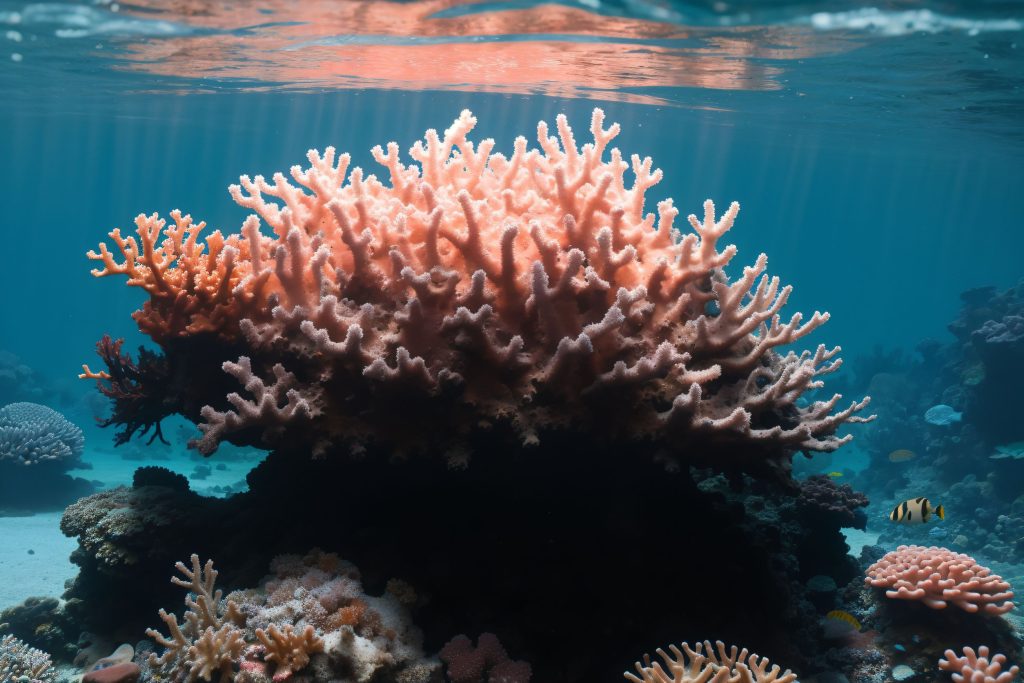
www.optimistdaily.com
How a beneficial bacteria could help save Florida’s coral from devastating disease
BY THE OPTIMIST DAILY EDITORIAL TEAM
Marine biologists are celebrating a potential breakthrough in the fight against one of the deadliest coral diseases in the Caribbean: stony coral tissue loss disease (SCTLD). A naturally occurring probiotic, discovered on a coral colony that survived an SCTLD outbreak, may help slow the disease’s devastating impact on Florida’s reef ecosystems.
The bacterium, known as McH1-7, was first identified in 2018 by researchers at the Smithsonian Marine Station. It produces a compound called tetrabromopyrrole (TBP), a naturally occurring chemical that not only appears to protect corals from SCTLD but also plays a key role in coral larval settlement.
“If TBP is a natural settlement cue, and if bacteria that also produce this compound protect corals from disease, it makes sense that larvae would settle where those compounds are being produced,” explained Jennifer Sneed, a biologist at the Smithsonian Marine Station. “More of them would survive to be able to recognize the compound.”
A two-pronged treatment approach
In a recent study published in Frontiers in Marine Science, researchers tested McH1-7’s disease-fighting potential on young great star coral (Montastraea cavernosa) colonies. The probiotic was applied using two methods:
Injecting the probiotic into seawater inside a weighted bag placed over entire coral colonies
Applying a paste directly to visible disease lesions
The bagging method, which enveloped the coral in a probiotic-rich microenvironment, proved far more effective than localized treatment.
Over a 2.5-year observation period, corals treated with the full-colony bagging method lost only about seven percent of their tissue, compared to 35 percent loss in untreated corals. The results suggest that the probiotics’ protective effects are long-lasting, providing a possible line of defense for coral restoration efforts in the region.
By contrast, applying the paste directly to lesions offered little protection, prompting scientists to focus on whole-colony approaches.
Diving into practical solutions
To scale this solution, the team designed a method for applying the probiotics via scuba diving that avoids disrupting nearby coral species. This careful testing confirmed the method is safe for healthy Caribbean corals and could be adapted as a tool for widespread SCTLD management.
“While the whole-colony bagging method does involve more material transport by divers and more time for deployment and retrieval, its performance at treating SCTLD and promoting long-term resistance outweigh these costs,” the authors wrote. “It is therefore the recommended application method of those we tested for probiotic treatments such as the McH1–7 strain.”
A cautious step forward
Still, researchers emphasize that this is just an early-stage solution, and there is much work to be done. The team calls for more testing across various coral species to better understand how probiotic treatments can be adapted and scaled.
“It’s important to understand that this is the very beginning,” said Kelly Pitts, lead author of the study and a researcher at the Smithsonian Marine Station. “This is definitely not a cure-all, but we’re definitely moving in the right direction.”
In a time when Florida’s coral reefs face mounting threats from disease, warming seas, and pollution, the promise of a natural and effective treatment, even in its infancy, is a beacon of hope for marine scientists and conservationists alike.
Source study: Frontiers in Marine Science— Evaluating the effectiveness of field-based probiotic treatments for stony coral tissue loss disease in southeast Florida, USAThe post How a beneficial bacteria could help save Florida’s coral from devastating disease first appeared on The Optimist Daily: Making Solutions the News.










